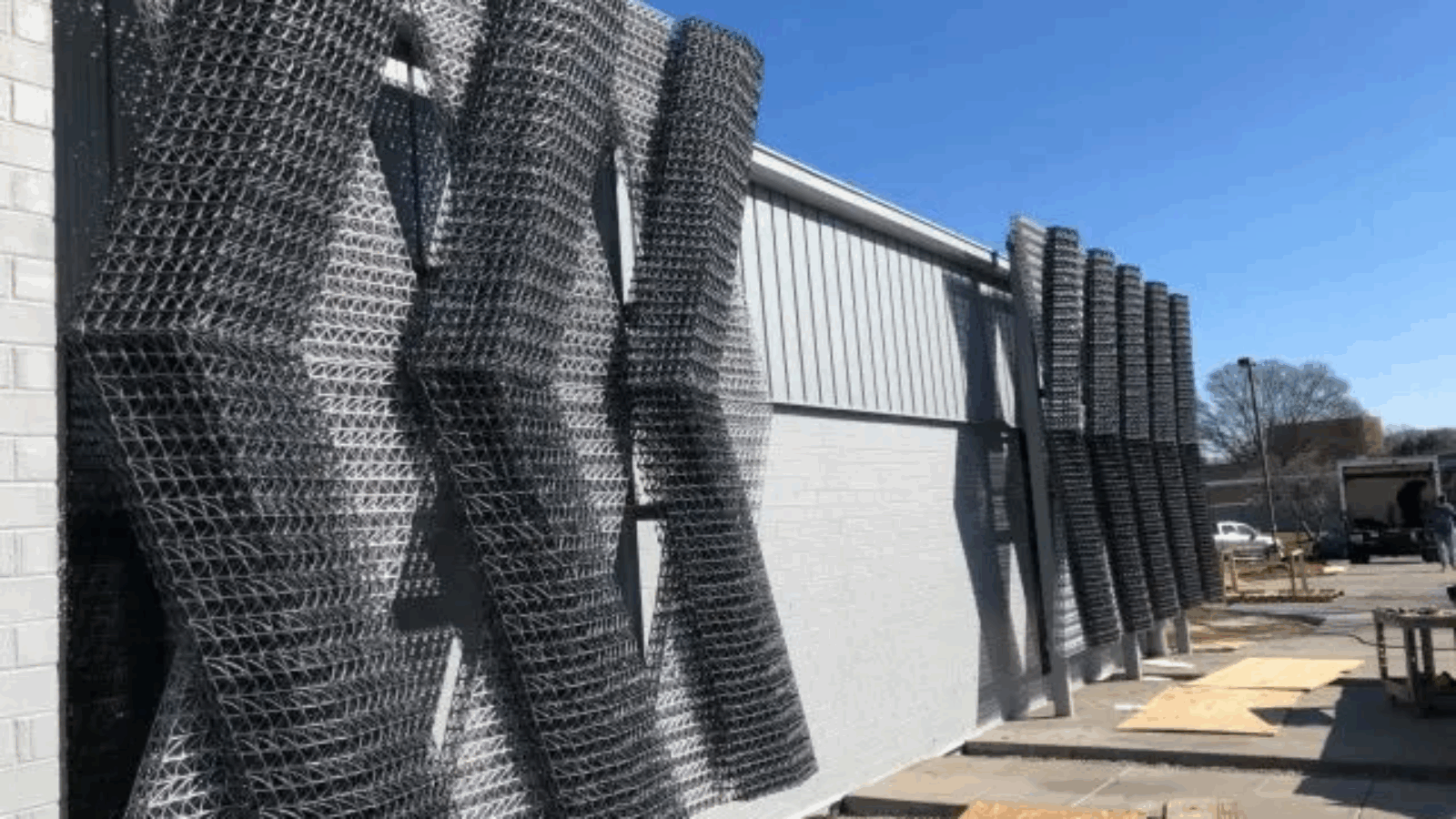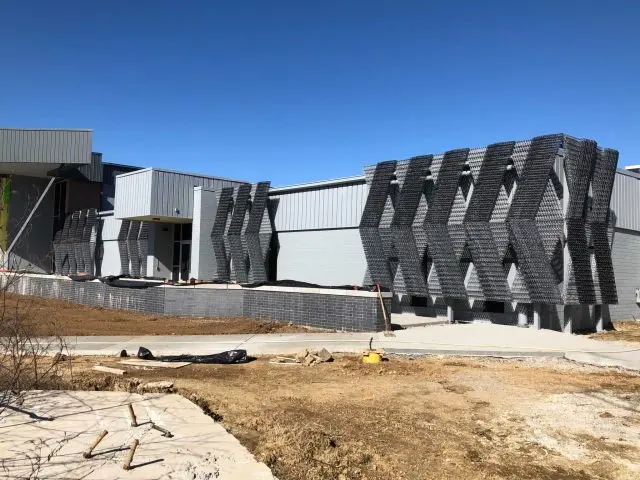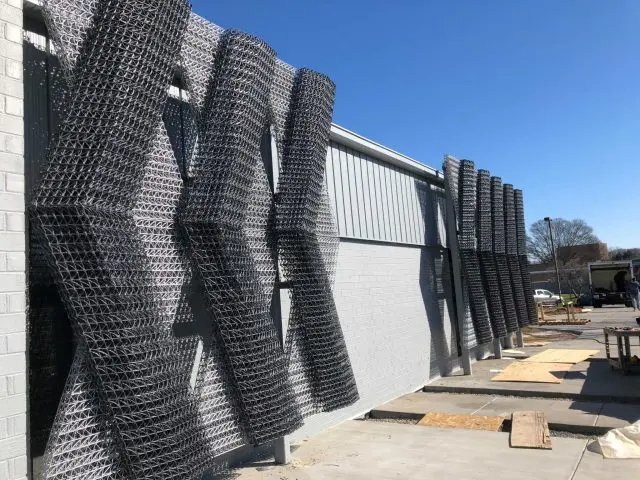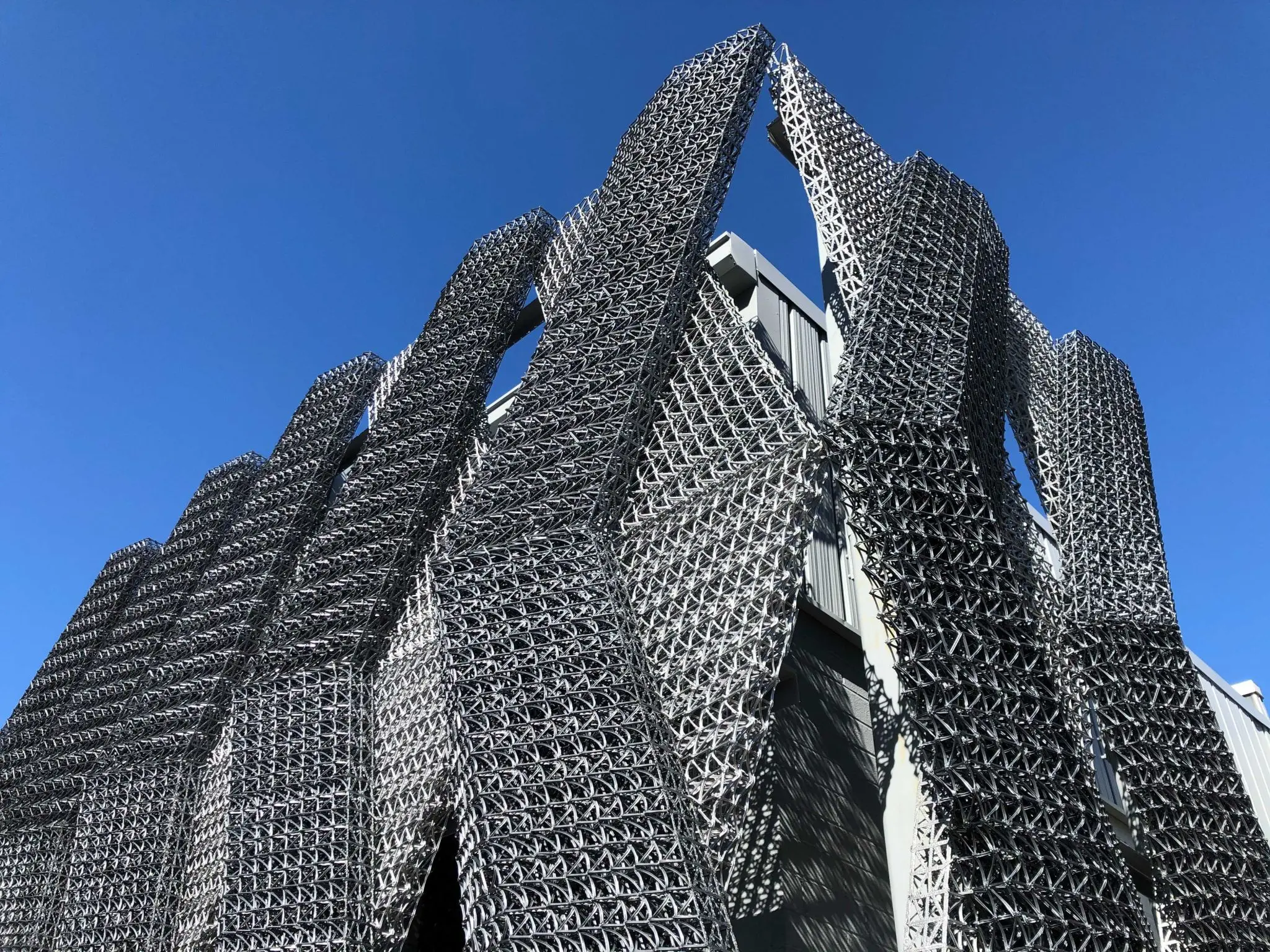Mitch Lewandowsky, Branch Technology‘s Chief Commercial Officer, had been hinting at a major project for some time. It has now finally been revealed that it’s not just one project but at least two, and possibly more, and they are both massive in size: a 3D printed facade for the Tennessee Valley Federal Credit Union building and exterior wall panels for the Center of Engineering, Technology, Arts & Sciences at the Chattanooga State Community College.
Both are produced using Branch Technology’s patented 3D printing process Cellular Fabrication, or C-Fab. The College building, in the photos, is almost ready while the final results of the Tennessee Valley Federal Credit Union (TVFCU) building 3D printed facade (in the video) are just about to be unveiled.
Educating the future
MBI Companies Chattanooga, alongside Chattanooga State Community College, Branch Technology, Helton Construction, leaped at the exciting opportunity for a convergence of materials, design, technology, ideas, people in the renovation of an existing Chattanooga State Community College Campus building.
Revitalization of the Center of Engineering, Technology, Arts & Sciences proved to be a perfect fit for Branch Technology’s next-generation design and construction application. Inspired by nature and utilizing the patented 3D printing Cellular Fabrication (C-Fab) technology, beautiful large-scale matrix panels were engineered, fabricated and installed to materialize sophisticated ideas into the built environment.
The engineering building now boasts a cohesive dynamic appearance to convey the innovation occurring within the classrooms, multi-functional space, two of the biggest FabLabs in the state, and a striking main entrance.
Banking the future
While some people think of financial institutions as being a bit stodgy and old-fashioned, the credit union in Chattanooga, Tenn., definitely breaks that mold. The Tennessee Valley Federal Credit Union (TVFCU) literally broke the 3D printing mold and hired Branch Technology, an architectural fabricator specializing in construction-scale 3D printing, and a TVFCU business member, to build its latest branch.
“Several years ago, I had the opportunity to visit Branch Technology when they were located in the Chattanooga Chamber of Commerce’s Business Incubator,” said Todd Fortner, president and CEO at TVFCU. “I was amazed at what could be made on a large scale with 3D printing. I immediately began to think about how we could incorporate this new technology into a future project.”
TVFCU leaders and its builder for more than 20 years, Construction Consultants, began working with Branch Technology for TVFCU’s new Southside Branch, located at 125 West 20th Street in Chattanooga. While TVFCU has a branch in Downtown Chattanooga, the Southside Branch fills a void in the community for a brick-and-mortar branch in this urban neighborhood less than 2 miles from the city center. Credit union leaders wanted to highlight the characteristics of the Tennessee Valley and to blend into the surroundings of this urban neighborhood for a truly innovative design.
Manufacturing on Demand
Branch Technology immediately went to work developing a design concept for the building’s exterior. Platt Boyd, the founder of Branch Technology, knew the Tennessee Valley’s scenic beauty. After seeing the Scenic City and competing in a startup accelerator program called GigTank at The Company Lab in summer 2014, he moved his company to Chattanooga with only three employees and one robot. Their first office was at the Business Development Center’s INCubator that is managed by the Chattanooga Area Chamber of Commerce. Today, they work from a 40,000-square foot manufacturing facility that is equipped with 15 robots.
Branch Technology’s team created a facade design that highlights the beauty of Chattanooga’s natural surroundings and incorporates TVFCU’s iconic wave branding into the design. With the design created, they began 3D printing the structure. Cellular Fabrication, C-Fab® is a unique printing method that allows material to solidify in open space, creating a matrix of polymer in virtually any shape. We bring unprecedented design freedom and resource stewardship to next-generation wall systems.
“The undulating facade is patterned to identify entrances and expand around the building’s curvature, serving as wayfinding for visitors,” said John McCabe, advanced concepts team and director of communications at Branch Technology. “Varying degrees of curvature in the sinuous facade pattern nod to TVFCU’s recognizable wave logo. This project is a staple of design freedom offering a one-of-a-kind product outside the literal box of repetitive, conventional construction and facade manufacturing.”
While the finishing touches on the branch exterior will soon be completed, construction will continue on the branch’s interior. TVFCU plans to open the Southside Branch in late spring 2021. The branch will be TVFCU’s 20th branch and will be a full-service branch.
“While our competitors are closing branches, we are opening them,” said Fortner. “We are constantly looking for better ways to serve our membership. We saw a void in our service area and decided to add a branch.”
Branch Technology’s 3D printed facade facts
The world’s first freeform 3D printed building facade utilizing the Cellular Fabrication (C-Fab®) Process.
· This project uses innovative computational design processes to generate complex forms prepared for direct digital manufacturing.
· The facade employs a 3D printed structure to unlock design freedom while utilizing material composites that complement each other to create a robust, insulative, and lightweight envelope.
· Fundamentally different from other existing 3D printing techniques, C-Fab takes advantage of this Freeform capability to create volumetric geometries with 20X less material than traditional layered-deposition techniques while also maximizing structural capacity through geometric optimization.
* This article is reprinted from 3D Printing Media Network. If you are involved in infringement, please contact us to delete it.
Author: Davide Sher





Hi, Very interested in your products and your potential .
Can you phone me on +61 400420392
To further discuss the opportunities
Kind regards,
Siobhan Pearson,
CEO